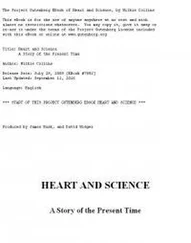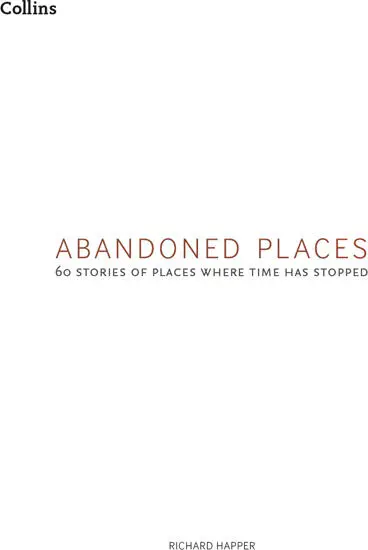
ABANDONED PLACES
Published by Collins
An imprint of HarperCollins Publishers
Westerhill Road
Bishopbriggs
Glasgow G64 2QT
www.harpercollins.co.uk
FIRST EDITION 2015
© HarperCollins Publishers 2015
Text written by Richard Happer 2015
Collins® is a registered trademark of HarperCollins Publishers Ltd
A catalogue record for this book is available from the British Library.
All rights reserved under International and Pan-American Copyright Conventions. By payment of the required fees, you have been granted the nonexclusive, nontransferable right to access and read the text of this e-book on-screen. No part of this text may be reproduced, transmitted, downloaded, decompiled, reverse-engineered, or stored in or introduced into any information storage and retrieval system, in any form or by any means, whether electronic or mechanical, now known or hereafter invented, without the express written permission of HarperCollins e-books.
The contents of this publication are believed correct at the time of printing. Nevertheless the publisher can accept no responsibility for errors or omissions, changes in the detail given or for any expense or loss thereby caused.
HarperCollins does not warrant that any website mentioned in this title will be provided uninterrupted, that any website will be error free, that defects will be corrected, or that the website or the server that makes it available are free of viruses or bugs. For full terms and conditions please refer to the site terms provided on the website.
Source ISBN: 9780008136598
Ebook Edition © AUGUST 2015 ISBN: 9780008165079
Version: 2015-08-28
10 9 8 7 6 5 4 3 2 1
If you would like to comment on any aspect of this book, please contact us at the above address or online:
email: collinsmaps@harpercollins.co.uk
 facebook.com/collinsmaps
facebook.com/collinsmaps
 @collinsmaps
@collinsmaps
Cover Image: Inside Buzludzha Monument
© Dimitar Dilkoff/AFP/Getty Images
Places listed chronologically by the approximate date by which they became abandoned
Cover
Title Page
Copyright
Petra
Machu Picchu
Easter Island
Ani
Mandu
Ross Island
Stelling van Amsterdam
Kayaköy
Sonargaon
St Kilda
Bokor Hill Station
Red Sands Sea Forts
Bodie
Tyneham
Oradour-sur-Glane
Giersdorf Church
Graun
Waiuta
Kolmanskop
Detroit
Lion City
Humberstone & Santa Laura
Chinguetti
North Brother Island
Craco
Chittagong
L’Île-aux-Marins
Leith Harbour & Grytviken
Wittenoom
Poveglia
Canfranc Station
Eastern State Penitentiary
Varosha
Hashima Island
Tatooine
Sanzhi UFO Houses
Millennium Mills
Buzludzha Monument
Epecuén
Pripyat
Centralia
Young Pioneer Camp
Juragua
Rosario Island Villas
London Underground Stations
Plymouth
Hotel del Salto
Beelitz Sanatorium
Objekt 825
Sathorn Unique
Macassar Beach Pavilion
Pyramiden
Larundel Asylum
Saddam’s Palaces
Mirabel Airport
Athens Olympic Venues
Six Flags Jazzland
Tampico
Nara Dreamland
Kangbashi New Area
Index
About the Publisher
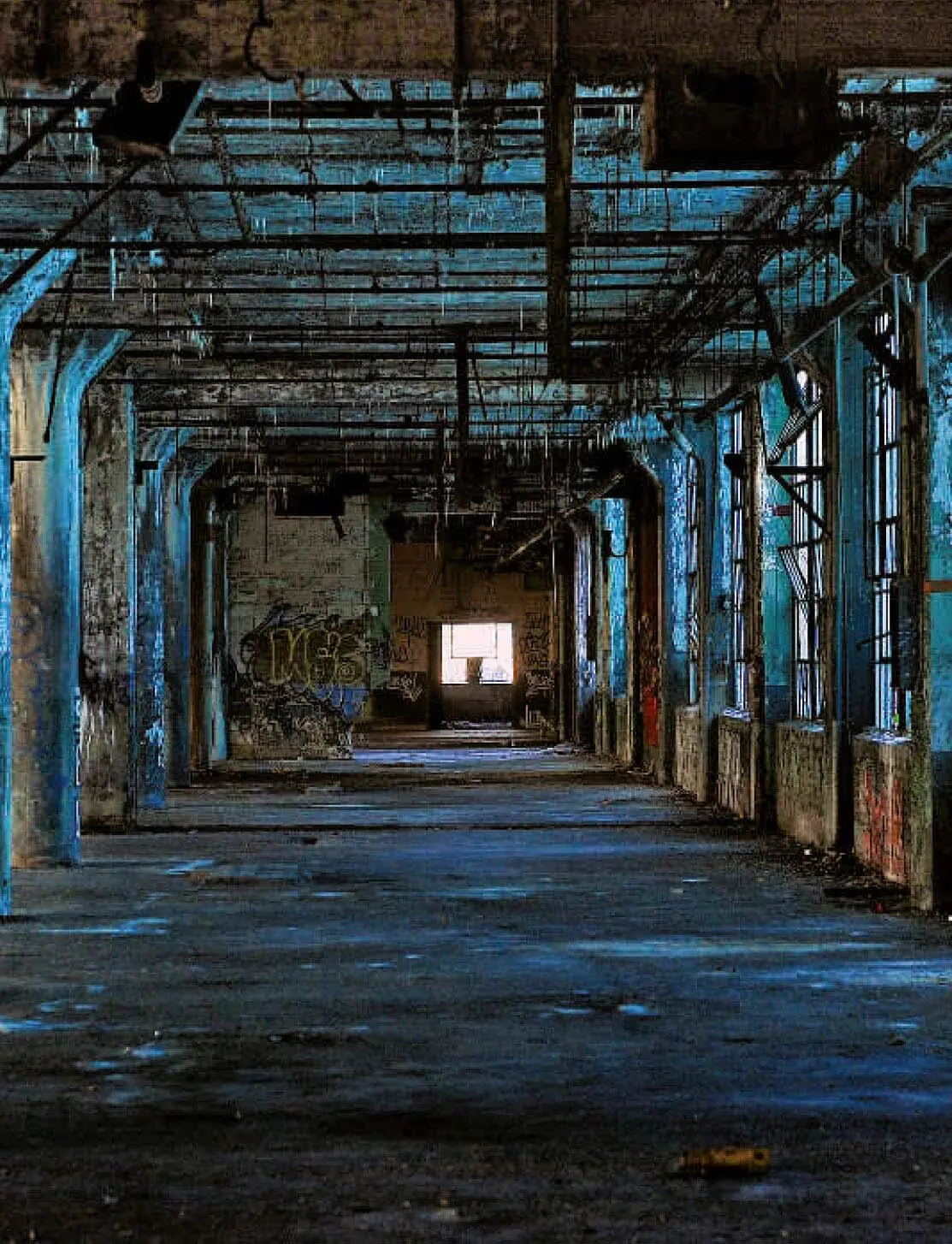
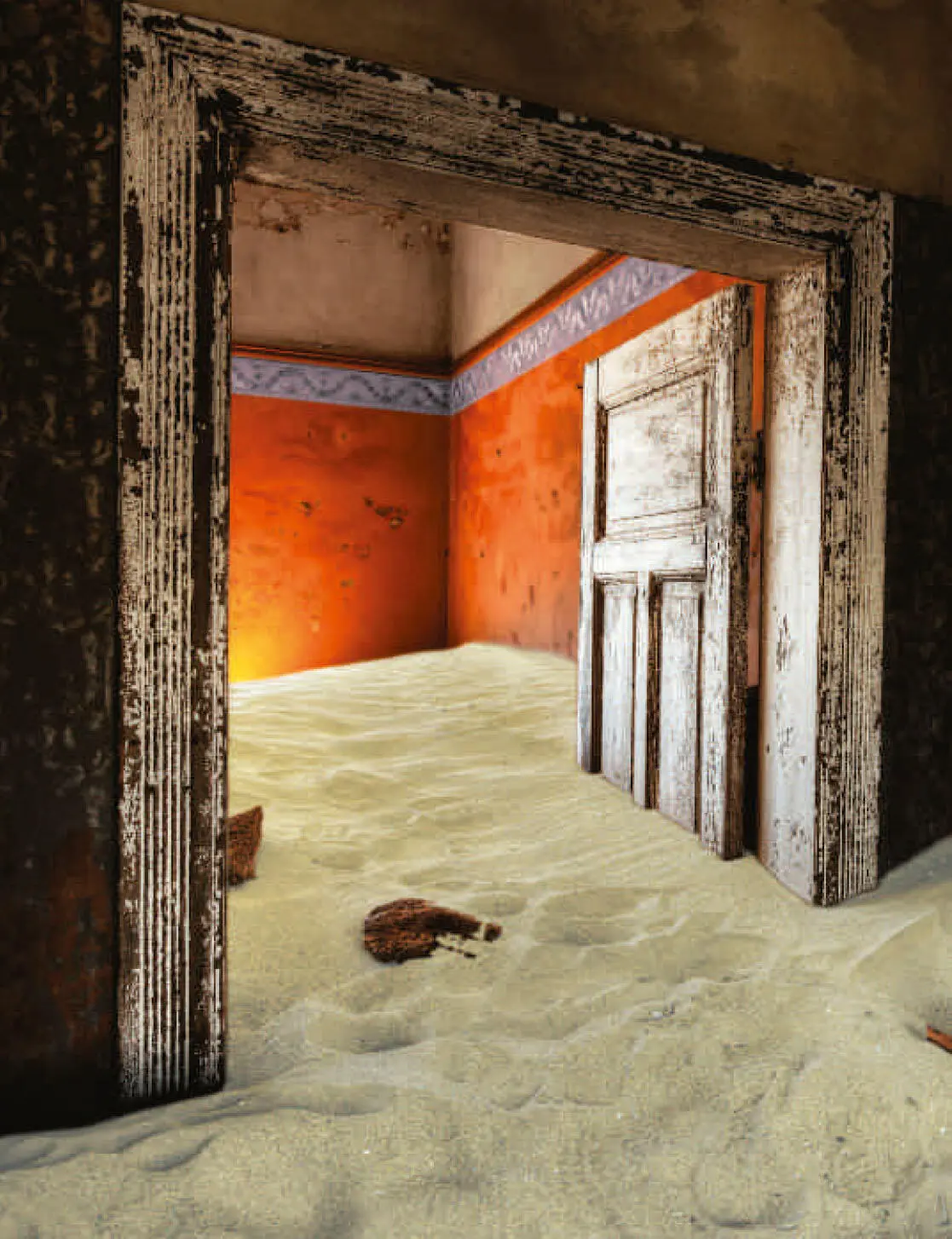
From Antarctic bays bound by a frozen sea to the most parched deserts on earth, from monsoon-drenched estuaries to wind-whipped Atlantic islands, there are places that humans have settled, thrived in, and then abruptly departed from. These abandoned places lie deep underground, on the highest mountain tops, in the middle of our biggest cities, in our suburbs, on our doorsteps. They are all around us, but most of the time we pass them by. Yet when we take the time to look, to explore, we find new worlds that are endlessly fascinating. What brought people to this place? How did they survive? What was life here really like? Perhaps most intriguingly of all – why did they leave?
That question is answered in myriad ways. War. Natural disaster. Economic pressure. Fashion. Political gamesmanship. Greener grass elsewhere. Human foolishness. Every derelict settlement is an empire in miniature that tells its own story of glorious rise and humble fall. Here we present sixty of those intriguing tales, illustrated with photographs that perfectly capture the haunting echoes of lives long forgotten. If there can be no true beauty without decay, then these abandoned places are, in their way, some of the most beautiful places on earth.
DATE ABANDONED: AD 663
TYPE OF PLACE: City
LOCATION: Jordan
REASON: Environmental/Economic
INHABITANTS: 20,000
CURRENT STATUS: UNESCO World Heritage Site
THREE CENTURIES BEFORE CHRIST’S BIRTH, A TRIBE OF NOMADS DECIDED TO CUT THEMSELVES A CITY FROM BARE ROCK. ABANDONED AND LOST FOR A MILLENNIUM, THEIR CAPITAL WAS REDISCOVERED IN THE NINETEENTH CENTURY AND IS NOW RECOGNIZED AS ONE OF THE WORLD’S OUTSTANDING CULTURAL WONDERS.
The rose-red city half as old as time
It is called Petra in Greek and Sela in Hebrew; both mean ‘rock’ and few places have as simple and as beautifully apt a name. For this city that once housed 20,000 prosperous souls was carved out of, and into, the red sandstone cliffs of a desert gorge over 2,000 years ago.
Most abandoned places have a short life. It is the very nature of their derelict existence: they have been let go, lost, left to the entropic power of nature. Petra, however, is almost as magnificent now as it was two millennia ago.
It is mentioned twice in the Bible and Arab tradition maintains that Petra is where Moses (Musa) struck his staff on a rock and water came forth. Even then it was a wonder: one of the wealthiest cities in the ancient world flourishing in one of the harshest climates on earth. Today it is a magnificently preserved picture of an ancient civilization and a thrilling reminder that not everything we abandon need be lost.
The wanderers settle down
The Nabataeans were originally nomadic spice traders of the south Levant and north Arabia. They controlled a loosely structured trade network with oases as hubs linked by caravan routes through the surrounding desert.
Around 300 BC, they decided to develop a more state-like kingdom and swiftly constructed Petra as their capital city. The fortress-like location of towering rocks and narrow gullies certainly made for a wonderful defensive site, but there was one major problem: water.
It may be surrounded on all sides by dry, searing desert, but Petra owes its existence to water. Or rather, to the skill and ingenuity of the Nabataeans in gathering that most precious of commodities and bringing it to their city. When rain does fall here, it creates flash floods that rip through the landscape, carving its distinctive gullies and gorges. For most people that rain would be too rare and too destructive to be of any use.
Читать дальше
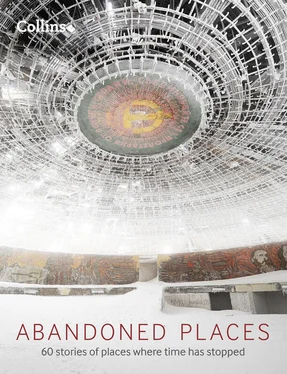

 facebook.com/collinsmaps
facebook.com/collinsmaps @collinsmaps
@collinsmaps









